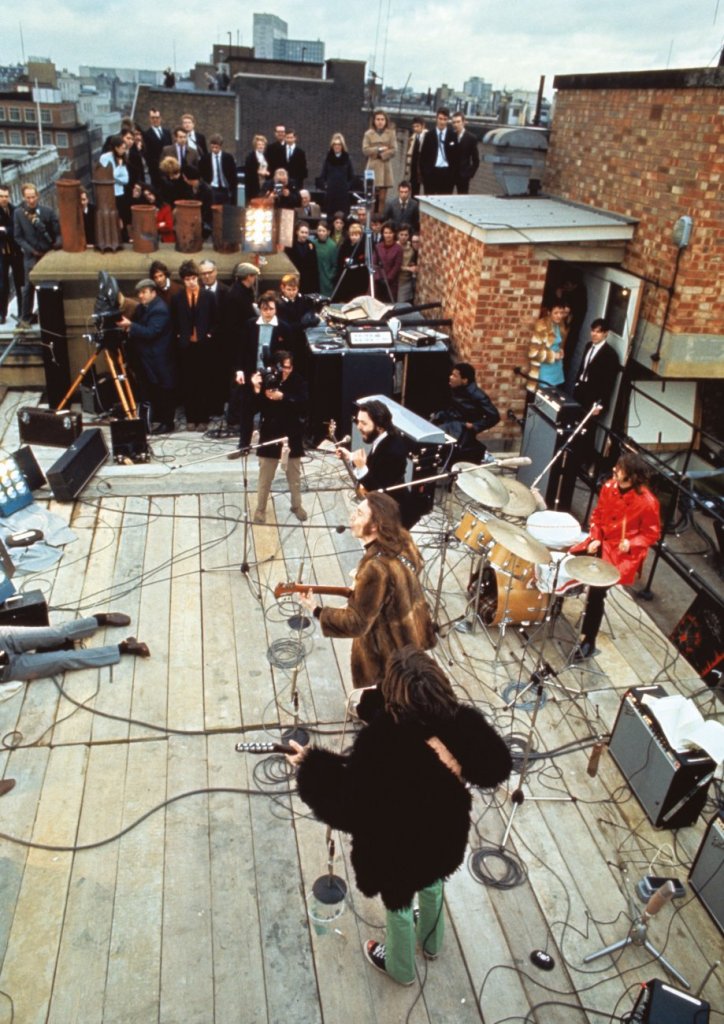Written by John Lennon, and recorded during the famed Let It Be sessions in 1969, The Beatles’ “Don’t Let Me Down” was first released on the B-Side of the “Get Back” single released that same year. Though Lennon crafted the intimate lyrics, the hit single has a Lennon-Paul McCartney dual credit—much like the majority of The Beatles discography. The two artists founded what went on the be the best-selling band of all time with George Harrison and Ringo Starr in 1960.
Videos by American Songwriter
Like much of Lennon’s best work for the late years of The Beatles and beyond into his solo career, “Don’t Let Me Down” was penned in the shape of his enduring muse, Yoko Ono—whom he married a few months after this recording. McCartney recalled the inception of the song as a “very intense period.” In his 1997 biography, Many Years From Now by Barry Miles, he explained the context:
“John was with Yoko and had escalated to heroin and all the accompanying paranoias and he was putting himself out on a limb. I think that as much as it excited and amused him, and [at] the same time it secretly terrified him. So ‘Don’t Let Me Down’ was a genuine plea… It was saying to Yoko, ‘I’m really stepping out of line on this one. I’m really letting my vulnerability be seen, so you must not let me down.’ I think it was a genuine cry for help. It was a good song.”
The track is a shimmering highlight of the band’s late-period catalog and broadly remembered for its rooftop recording—part of what would be The Beatles’ last live performance. Despite their many transcendent exhibitions of sonic complexities, this one employs a minimalist approach taken only by the most confident of artists. Emotionally charged, each player infuses their respective instrumental approach to transform a simplistic set into an electric pop performance.
After rehearsals at Twickenham Film Studios, “Don’t Let Me Down” was first recorded in the basement of The Beatles-founded Apple Records on January 21, 1969. the re-location was part of Harrison’s requirements in order to reconvene with the group over a disagreement about the direction of the project. According to Mark Lewisohn’s Complete Beatles Recording Sessions, the following day (January 21) they captured a version that was selected for the unreleased Get Back album. On January 28, The Beatles—alongside Bill Preston on keys—recorded the version which ended up on the “Get Back” single. They taped it twice again two days later on the roof of Apple, the first of which was included in the Let It Be film.
The flipside single for “Don’t Let Me Down” and “Get Back” was released on April 11. At that point, the Get Back project tapes had been recently turned over—at Harrison’s suggestion)—to Phil Spector for his production and remix expertise. The finished product, Let It Be, debuted on May 8, 1970, without “Don’t Let Me Down.”

The Beatles performed “Don’t Let Me Down” twice during the rooftop performance—as Lennon fumbled over the lyrics the first go-round. As seen in the video below, Lennon’s inner-rocker steps out, leading into the quick-leap entrance plugged into electric guitar. Masterfully, he delivers his aching, anguished plea to his lover as the iconic band he built for a decade crumbled around him. Though they were falling apart, his bandmates pulled together for that final performance, elevating his track with whole-hearted performances. Starr keeps time from the drumset, pulling Lennon and McCartney’s intertwining harmonies back down into the collapsing chorus line Don’t Let Me Down between verses. Preston’s appearance on the electric keyboard added an R&B element to the track that separates it from other recorded versions.
Lennon is seen wearing a fur coat in the video, borrowed from Ono to protect from the chilling weather. He’s not the only one styled in female fashion, as Starr sits behind the drum set in his wife, Maureen Starkey’s red raincoat.
Functioning as a unit, The Beatles were captured at their best in what is considered their final live performance on that London rooftop. The song peaked at No. 35 in the Billboard 100 in 1969 but has endured the last five decades. In 2003, a McCartney-led team including Paul Hicks, Guy Massey, and Allan Rouse created a composite stereo mix of both rooftop performances of “Don’t Let Me Down” from January 30th, 1969 for inclusion on a new album, Let It Be…Naked, since it didn’t make the cut on the original 1970 release.
On October 15, 2021, The Beatles will celebrate their final album with a “Super Deluxe” edition of Let It Be (1970), including three songs from the set: “Let It Be” (2021 Stereo Mix), “Don’t Let Me Down” (first rooftop performance) and “For You Blue” (Get Back LP Mix). The album has been newly mixed by producer Giles Martin and engineer Sam Okell. The physical and digital Super Deluxe collections also feature 27 previously unreleased session recordings, a four-track Let It Be EP, and the never before released 14-track Get Back stereo LP mix compiled by engineer Glyn Johns in May 1969.
“I had always thought the original film Let It Be was pretty sad as it dealt with the break-up of our band, but the new film shows the camaraderie and love the four of us had between us,” Paul McCartney writes in the book included in the set that will contain essays, photos, and detailed session notes. “It also shows the wonderful times we had together and combined with the newly remastered Let It Be album, stands as a powerful reminder of this time. It’s how I want to remember the Beatles.”
Pre-order the Let It Be Super Deluxe Editions, here, and watch The Beatles perform “Don’t Let Me Down” below.
